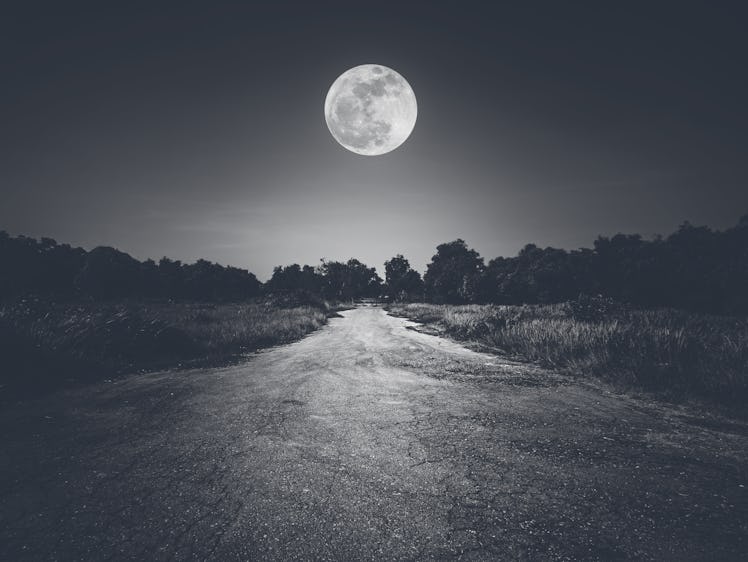August's Super 'Sturgeon Moon' Will Compete With A Dazzling Meteor Shower
August’s Sturgeon Moon will be the last Super Moon of the year — and here’s everything you need to know.

Summer is in full swing and as we enter the last month of this season, the sky is gearing up to give us a beautiful Full Moon. If you love watching these moments in the sky, it’s important to mark this date on the calendar. August’s Sturgeon Moon will be the last Super Moon of the year — and here’s everything you need to know.
What is the August Sturgeon Moon?
According to the Old Farmer’s Almanac, the Sturgeon Moon got its name from the strange-looking fish called a sturgeon. The site explains that the fish was readily caught at this point in the summer in Lake Champlain and the Great Lakes.
“These prehistoric-looking fish have been traced back to around 136 million years ago and many people call them ‘living fossils,’” the site explains. Unfortunately, due to over-fishing, there are fewer sturgeon fish in the lakes than there used to be.
Other names for the Full Moon this month include Flying Up Moon, Rising Moon, and the Black Cherries Moon.
When and how can I watch the Sturgeon Moon?
August’s full Moon is set to reach its peak illumination on Aug. 11, at around 9:35 p.m. Eastern time. “On either of these nights, look toward the southeast after sunset to catch a glimpse of the Sturgeon Moon rising,” Old Farmer’s Almanac explains.
The Sturgeon Moon will also mark this year’s fourth and final Super Moon. Super Moons happen when the Moon reaches the nearest point to Earth. This technically makes the Super Moons extra bright and large when we view them from Earth, per Old Farmer’s Almanac.
Don’t forget about the Perseid meteor showers!
While the year’s last Super Moon is going to be beautiful, we can’t forget that the Perseid meteor shower is coming, too! The Perseid meteor shower is said to have peak viewing on Aug. 11, 12, and 13. The Perseid meteor showers are often called “the best meteor shower of the year,” according to NASA because there are so many bright meteors you can see!
Next up for the Moon is the Corn Moon in September.